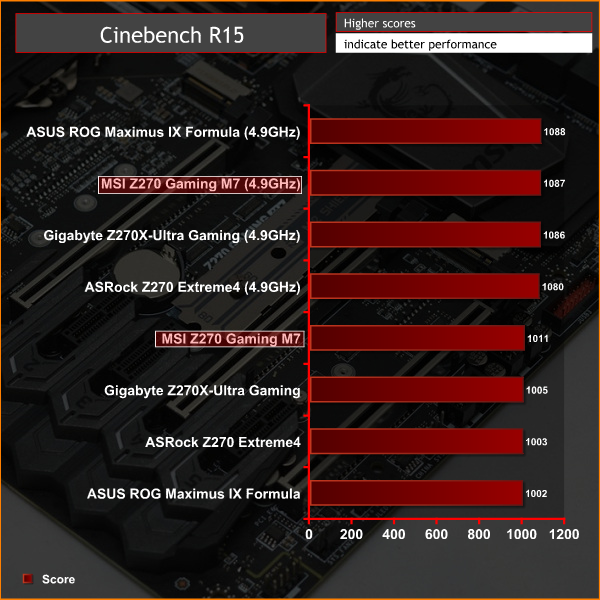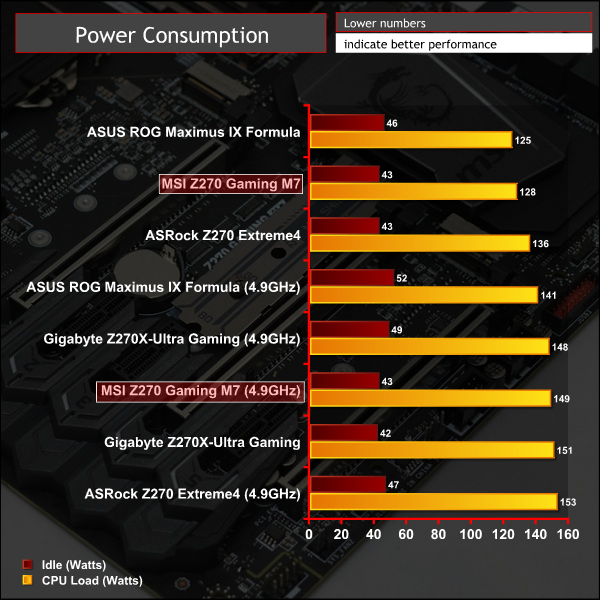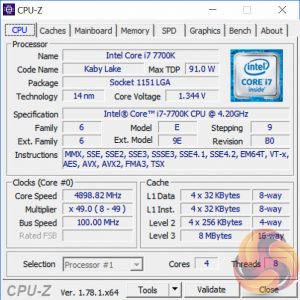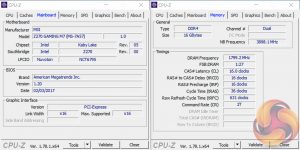For our overclocking we were still able to achieve the same 4.9GHz overclock as on other motherboards, 5 and 5.1 GHz would both POST but were not stable. MSI offers a number of different voltage modes so we opted for Adaptive + Offset using 1.275 volts as the adaptive voltage and 0.05 volts as the offset. In theory this means a voltage of up to 1.325 volts but MSI's Auto LLC increases the voltage slightly under load so we observed up to 1.344.
This voltage mode combination seemed to offer an excellent balance between idle power consumption and load performance.
3600MHz XMP Memory:
We test the motherboard's ability to run G.Skill's high-speed 16GB DDR4 Trident Z kit at a 3600MHz XMP setting. High-speed XMP settings can prove a challenge for motherboard designers when optimising the settings for stability at the intended DRAM frequency.
MSI's Z270 Gaming M7 executed the XMP 3600MHz profile of our G.Skill Trident Z 16GB (2 x 8GB) memory kit with no hesitation.
Overclocked Performance
As a performance comparison, we have included the results from three other Z270 motherboards. The maximum overclocked configuration achieved with each board was a 4900MHz (49 x 100MHz) processor frequency whilst using 3200MHz CL16 memory.

Power
We leave the system to idle on the Windows 10 desktop for 5 minutes before taking a reading. For CPU load results we run AIDA64 CPU, FPU, and Cache stress tests and take a reading. The power consumption of our entire test system (at the wall) is shown in the chart.

MSI's power consumption was typical of its clock speed and voltages, absolutely no surprises here.
Be sure to check out our sponsors store EKWB here
 KitGuru KitGuru.net – Tech News | Hardware News | Hardware Reviews | IOS | Mobile | Gaming | Graphics Cards
KitGuru KitGuru.net – Tech News | Hardware News | Hardware Reviews | IOS | Mobile | Gaming | Graphics Cards




